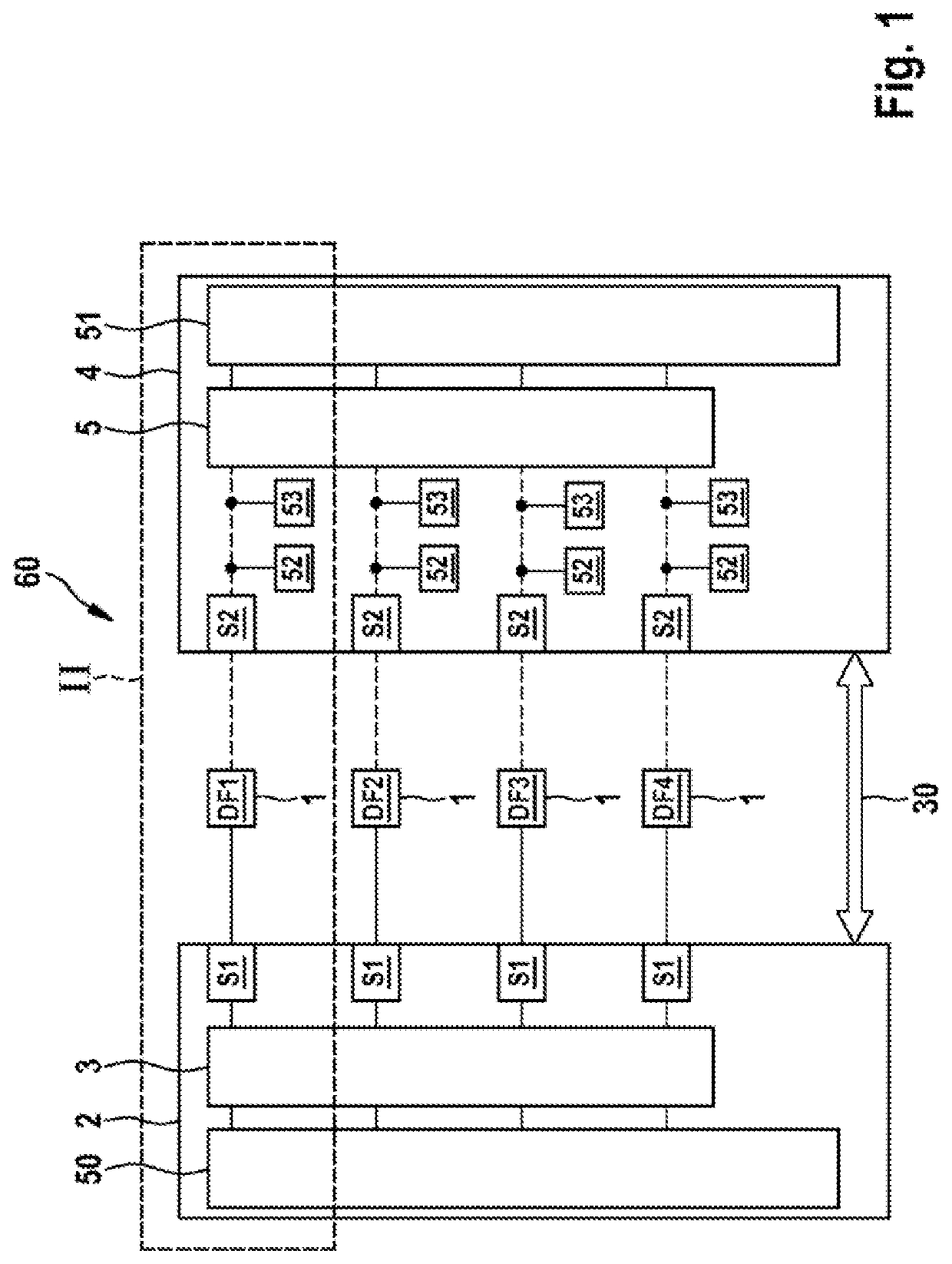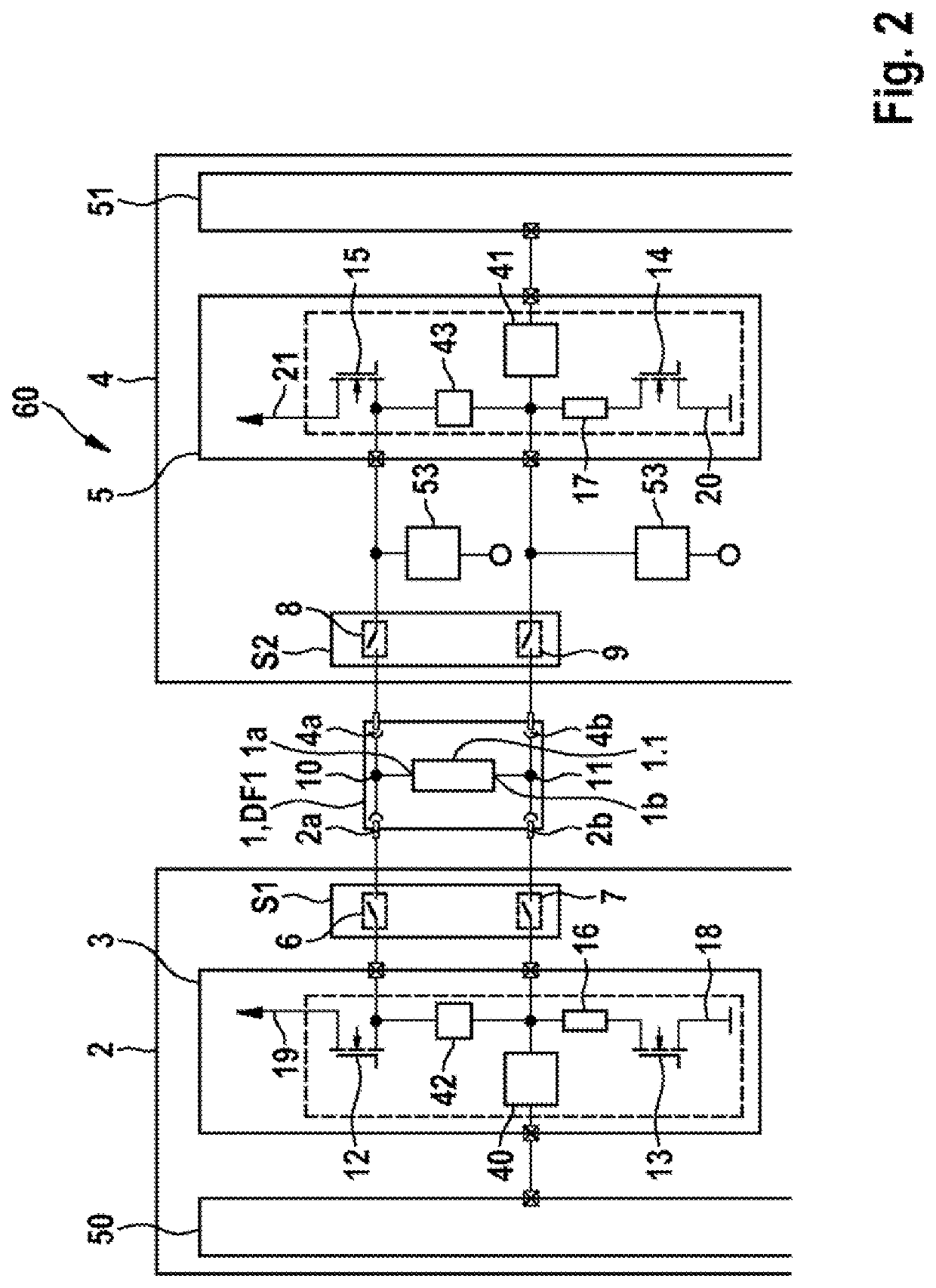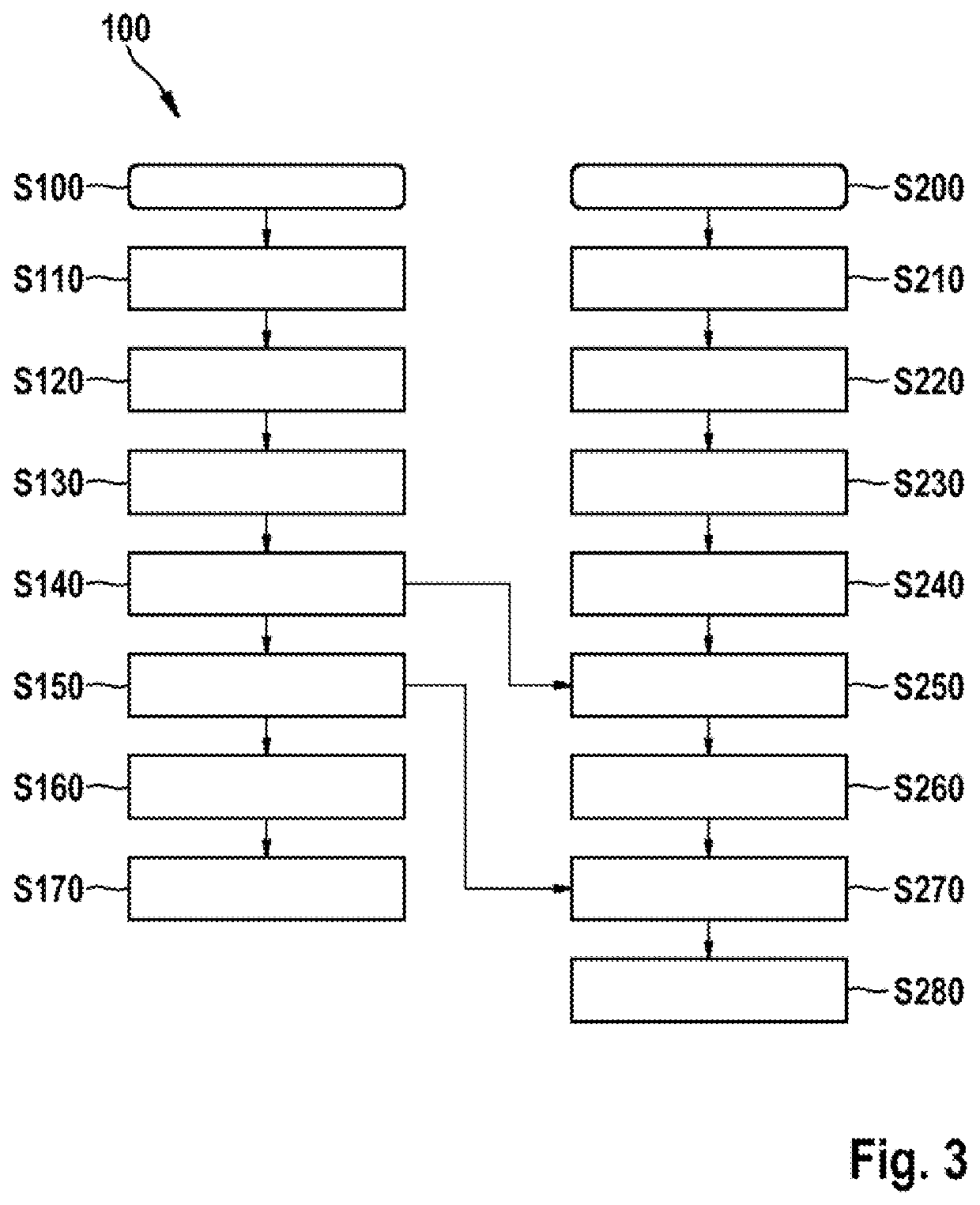Operating Method for a Redundant Sensor Assembly of a Vehicle System and Corresponding Redundant Sensor Assembly
a technology of vehicle system and sensor assembly, which is applied in the direction of braking system, vehicle sub-unit features, braking components, etc., can solve the problem of speed sensor decoupling, and achieve the effect of increasing the availability of the sensor and saving costs
- Summary
- Abstract
- Description
- Claims
- Application Information
AI Technical Summary
Benefits of technology
Problems solved by technology
Method used
Image
Examples
Embodiment Construction
[0026]As can be seen from FIGS. 1 and 2, the depicted exemplary embodiment of a redundant sensor arrangement 60 of a vehicle system comprises two controllers and multiple sensors 1. The individual sensors 1, in a normal mode of the vehicle system, are each coupled to a controller embodied as a primary controller 2 and, in an emergency mode of the vehicle system, are each coupled to a controller embodied as a secondary controller 4 and are supplied with power. In this instance, the controller that is coupled to the sensors 1 receives and evaluates signals from the individual sensors 1. As can furthermore be seen from FIGS. 1 and 2, the redundant sensor arrangement 60 in the depicted exemplary embodiment comprises four sensors 1, embodied as speed sensors DF1, DF2, DF3, DF4, that each have a sensor element 1.1. As can furthermore be seen from FIG. 1, the individual sensors 1 embodied as speed sensors DF1, DF2, DF3, DF4 can each be connected to evaluation electronics of the primary con...
PUM
 Login to View More
Login to View More Abstract
Description
Claims
Application Information
 Login to View More
Login to View More - R&D
- Intellectual Property
- Life Sciences
- Materials
- Tech Scout
- Unparalleled Data Quality
- Higher Quality Content
- 60% Fewer Hallucinations
Browse by: Latest US Patents, China's latest patents, Technical Efficacy Thesaurus, Application Domain, Technology Topic, Popular Technical Reports.
© 2025 PatSnap. All rights reserved.Legal|Privacy policy|Modern Slavery Act Transparency Statement|Sitemap|About US| Contact US: help@patsnap.com



